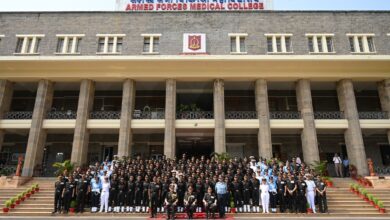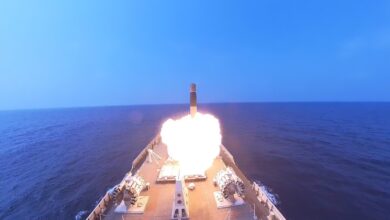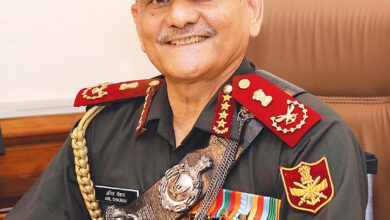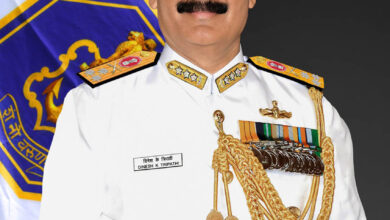Indian Navy conducts twin-carrier exercise in vaunted ‘power projection’; but fund scarcity hobbles full combat potential
- The June 10 deployment of two carriers by IN has received favourable notice internationally and this has added salience on the eve of Prime Minister Narendra Modi’s state visit to the USA (June 21) in relation to India’s naval capabilities.
By Cmde C Uday Bhaskar (Retd)
New Delhi, June 17. The Indian Navy (IN) demonstrated its operational readiness in an impressive twin-carrier exercise in the Arabian Sea earlier this week (June 10) and the focus was on its aircraft carriers – INS Vikrant and INS Vikramaditya. The exercise involved 35 aircraft (fixed-wing and helicopters), surface ships and submarines, thereby testifying to the multi-dimensional credibility of the IN.
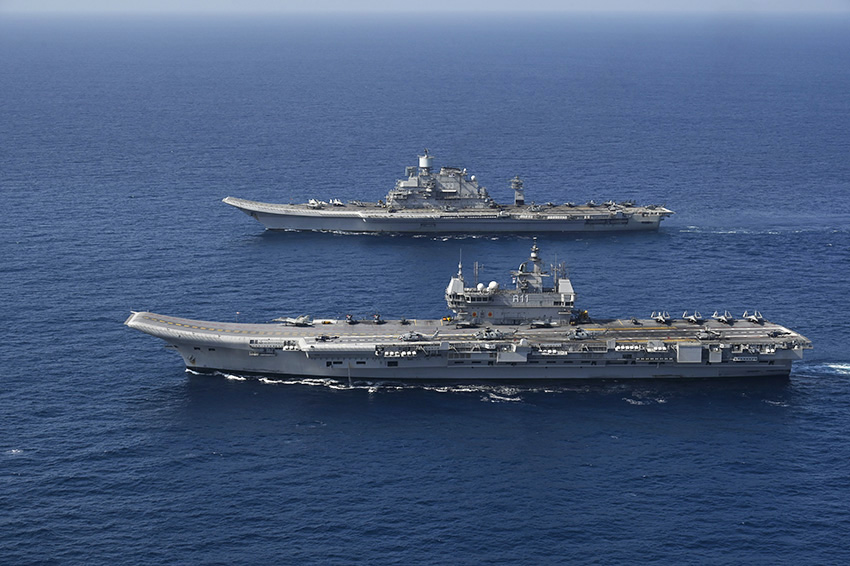
This, however, is not the first time that the IN has carried out such deployment with two carriers – though it is not very often that the silent service has had the opportunity to field two operational aircraft carriers for extended periods. India acquired its first carrier, the INS Vikrant, in 1961 from the UK and a second one, INS Viraat, was also acquired from the UK in 1987. Thus, for a short period India could demonstrate a two-carrier presence in the Indian Ocean but the paucity of funds did not allow for a third flattop (as carriers are referred to) that would have enabled the sustained presence of two such platforms at sea, while the third one underwent repair and refit.
The first Vikrant was decommissioned in 1997 and the IN acquired the former Gorshkov from Russia in the early part of this century. After extensive refurbishment this Kiev class ‘aircraft carrying cruiser’ (in Soviet parlance) was commissioned in 2013 as the INS Vikramaditya. In essence, the IN was operating a single carrier for almost 16 years and it was only with the commissioning of the new Vikrant in 2022 that India again had the luxury of operating two carriers.
The June 10 deployment of two carriers by IN has received favourable notice internationally and this has added salience on the eve of Prime Minister Narendra Modi’s state visit to the USA (June 21) in relation to India’s naval capabilities. In a rather expansive interpretation of the IN’s Arabian Sea exercise, CNN reported this as “India demonstrates naval strength with dual aircraft carrier exercise, a feat China has yet to accomplish”. The report adds that India is the only other nation apart from the USA to demonstrate multi-carrier deployment proficiency and attention has been drawn to the fact that while China has two carriers – the PLA Navy has not yet acquired the level of professional competence associated with the IN.
Reality check more modest
While such laudatory acknowledgement of the IN is heady, the reality check is more modest. The operational efficacy of an aircraft carrier is predicated on its composite air power capability, which in turn is based on the type of fighter aircraft it can embark along with the anti-submarine helicopters and related electronic warfare and anti-missile capabilities.
In this matrix, the two carriers of the IN are yet to acquire optimum performance parameters. The major challenge is the availability of a modern carrier-compatible fighter aircraft in adequate numbers and this is still a work in progress. While the Vikramaditya operates the Soviet origin Mig-29 fighter, this is essentially a land-based fighter modified for naval use and while the platform is sturdy and proven it is at best an interim choice.
India has invested in the LCA (light combat aircraft) and the navy-funded experimental version NLCA (naval LCA) accomplished successful carrier operating trials in February this year. This proved the concept thereby paving the way for designers to proceed with work on the more capable twin-engine deck-based fighter (TEDBF) for the Vikrant and her successor, the IAC-2. A ship designer’s thumb rule allows a thousand tons of steel for every aircraft that the aircraft carrier is designed to carry. India’s first two carriers, the 20,000-ton Vikrant and the 30,000-ton Viraat, were capable of accommodating 20 and 30 aircraft/helicopters respectively in their hangars and operating them safely from their decks.
As Admiral Arun Prakash, former IN chief and ace naval fighter pilot, opines about the challenges ahead: “Ironically, budgetary, and other constraints have never permitted the navy to acquire enough aircraft to provide a full combat outfit for one ship, while also allowing for vital training commitments. On the few occasions that both carriers were operational, they had to share the scarce assets.”
Fund crunch hobbling IN
In 2004, naval planners assumed that 45 MiG-29K fighters and MiG-29KUB trainers would suffice to meet the initial requirements of the 40,000-ton Vikramaditya as well as a training squadron. More aircraft could follow in a second tranche. However, the aircraft did not adapt too well to carrier operations and attracted the CAG’s (Comptroller and Auditor General) criticism for “defects in engines, airframes and fly-by-wire systems…serviceability reported ranging from 15.93% to 37.63%.”
Both carriers in service with the IN are over 40,000 tons and should carry a mix of 35-40 fighters/helicopters each to rise to their full combat potential. The current IN aircraft inventory falls well short of that mark, and since the service seeks to acquire new carrier-borne aircraft, the government would have to allocate adequate funding for not less than 60-70 machines of the appropriate mix. Only then will the IN be able to sustain a credible carrier presence in the Indian Ocean.
The press release issued by the Indian Ministry of Defence on June 10 refers to “power projection” by the IN’s two carriers and generously describes them as “floating sovereign airfields” that will serve “as a powerful testament to the pivotal role of sea-based air power in maintaining maritime superiority.”
However, for this ambitious vision to be realized, the IN will need sustained funding of a higher order than what it now receives (under 18 percent of the annual defence outlay) and this has proved elusive for decades. India’s goal of maintaining a degree of strategic autonomy will be directly related to its trans-border military capability and the naval domain is the most viable. But New Delhi alas is unable to appreciate the abiding significance of its natural maritime endowment.
(The author is a retired Indian Navy officer and Director, Society for Policy Studies, New Delhi. Views are personal)
— By arrangement with SOUTH ASIA MONITOR.


